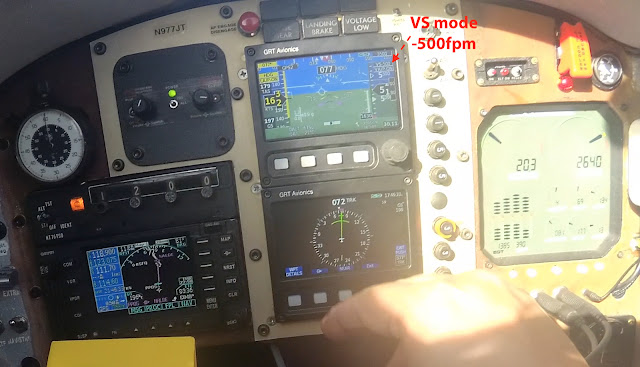Pitch servo flight test
The one year long upgrade process had come to the end, and it is time to see if this conversion has been a good idea, or a waste of time and money.
As you might imagine, I couldn’t wait to go flying to check out the fully functional autopilot.
Would it work well?
Would it work at all?
The wait was killing me! Meanwhile 7JT sat quietly in the hangar, perhaps still a little sore from the latest cyborg implant.
Luckily, I wouldn’t have to wait long for a couple of sunny days on which to fly.
I actually conducted four flights over two days, and aside from a couple of control reversal issues (fun fun) due to software settings I was positive I had changed, the installation only required a little more torque output from the servo (another software setting) before 7JT started to perform the way I knew she was capable of.
“Fanfreakingtastic!”
Unfortunately, due to reasons unrelated to the servo installation, and that were since resolved, I had to fly these flights in heading mode, and I didn’t get to shoot any approaches. I’ll try doing that over the next few flights, however I wanted to show you a few pictures of the pitch servo in action during a couple of descents, one in IAS (Indicated Airspeed) mode, the other in VS (Vertical Speed) mode.
First though, let me show you the only climb shot I’ve got in which the sun didn’t fade the whole scene out…
 |
| Constant 120kts airspeed climb to 6500' |
After climbing to 6500’, I made a few turns. Here’s one to the left…
 |
| Level turn to a southerly heading |
After flying a 15 minutes closed loop in heading mode, I found myself on the way back home, needing to descend. I broke up the descent in multiple sections in order to get a little more practice, and highlight any possible issues.
For the first descent, I selected 5500’ and chose a constant speed of 160kts. The Flight Director immediately commanded a dive, but the autopilot was very smooth in lowering the nose to follow it.
 |
| Process of beginning a descent in constant speed mode |
As the airspeed reached the selected 160kts, the Flight Director rose to maintain the speed, and the autopilot smoothly followed its command.
 |
| Constant speed descent established |
Roughly 100’ prior to reaching the selected 5500’, the vertical autopilot went into “Altitude Capture” mode, during which the nose is raised to level the plane off. At this point I added enough power to maintain my normal cruising speed.
 |
| Starting the leveling maneuver |
The autopilot then went into “Altitude Hold” mode. The airspeed decayed to whatever the power setting I used would support, and the autopilot pitched to maintain altitude.
 |
| New altitude reached and level off completed |
The next descent to 3500’ was started in IAS mode at 180kts, but then I switched to VS mode at -500 fpm (feet per minute) due to turbulence, and also to check that mode.
 |
| New descent to 3500' selected, with constant airspeed of 180kts. |
 |
| Too bumpy for 180kts, I switched to a constant Vertical Speed descent at -500fpm |
 |
| Vertical Speed descent fully established |
Once again the autopilot went into “Altitude Capture” first, then the “Altitude Hold”.
 |
| Should start to look familiar by now |
 |
| "That's right... you've got this now!" |
What else can I say… I am beyond ecstatic.
As awesome as 7JT has always been, she has now become the airplane of my dreams. Long trips will now be less stressful, and more fun, and I’ll be able to spend more time looking outside, both for traffic and to enjoy the view.
Should the occasional cloud get in the way, 7JT is now capable of just about any approach one can think of, precision and non, and do it all by itself, including Missed Approaches and Holdings.
All it’s required of me now is to stay awake, and enjoy the ride.
I can hardly imagine money and time better spent.
That's so frigging awesome. A real functioning autopilot in your aeroplane. Huge thumbs up. Cheers, Aaron
ReplyDeleteThat's what I'm saying Aaron!!! (Actually there are two independent autopilots driving two servos, but I can only use one of them at a time) 😉
Delete